Rutz opened in 2001 as a wine bar, but changed in 2004 when the kitchen was taken over by chef Marco Mueller. Mr Mueller trained at restaurants including Schlosshotel Gerhus, Grand Slam, and Castle Hotel Buhlerhohe, with is first head chef position being at Harlekin in 1999. He moved to Windspiel in 2003 before taking up his position at Rutz. The restaurant gained a Michelin star in 2007, a second Michelin star in 2016 and a third in 2020. Mr Mueller did not appear to be in residence this evening.
The dining area is spread over two floors, with additional outdoor terrace seating in suitable weather. The staircase rises next to an imposing “wall of wine“ cabinet that stretches from the ground floor right up to the upstairs dining room ceiling. Tables are well spaced and the feel is quite informal, with no tablecloths. There is a tasting menu format only, with the only option whether to add an extra course, the menus priced at €255 (£215) or €285 (£240) respectively.
Rutz is noted for its interesting wine list. The list had 553 labels and ranged in price from €35 to €5,340, with a median price of €129 and an average markup to retail price of 2.3 times, which seems to me very reasonable for a high-end restaurant. Fully 53% of the wines were German, but there were also offerings from elsewhere, including Slovenia and England. Sample references were Weingut Von Hovel Scharzhofberg Riesling Grosse Gewachs 2017 at €75 for a bottle that you can find in the high street for €61, Domiane Leflaive Macon-Verze Le Monte 2019 at €99 compared to its retail price of €83, and Weingut Adeneur Gärkammer Spätburgunder Grosse Gewachs 2014 at €135 for a wine that will set you back €163 in the high street. For those with the means there was Domaine Thomas Morey Puligny-Montrachet Truffières 2019 at €290 compared to its retail price of €420, and the lovely Chateau Pontet-Canet 2010 (a Robert Parker 100 point wine) at €499 for a wine whose current market value is €341.
The meal began with a series of canapés. To begin there was a little cup of broth made from foraged and preserved robinia blossom (don’t try this at home as robinia blossom is edible but the leaves, bark and seed pods of this tree are poisonous). The broth was sweetened by honey from a hive on the roof of the restaurant. This broth was harmless enough though not particularly thrilling in flavour. Better was salted herring with raw shallots and a foam of sour cream, along with a granita of apple and dill, garnished with pickled cucumber that was grated over the dish at the table. This worked very well, the acidity of the apple complementing the natural oiliness of the herring, the shallots adding a bit of crunch and bite, resulting in a nice contrast of textures. This was followed by leeks that had been charred on a grill and combined with a mousse of fermented blueberries and a cow milk cheese made on a tiny farm in Germany, the canapé dusted with leek ash. This was actually a lovely dish, the overall effect being a creamy texture infused with a smoky flavour from the charred leeks, the richness of the cheese offset by the acidity of the fruit. The final canapé was hamachi (aka amberjack or yellowtail) and smoked eel with five-year aged miso paste, rose vinegar, fresh horseradish as well as horseradish jelly and powder, finished with wild rose oil. The fish had excellent flavour and the bite of the horseradish was carefully controlled, working very well with the amberjack without dominating it (18/20 canapés).
Bread was excellent sourdough made from scratch here, using flour from a mill in Saxony. The first formal course of the meal was trout from a farm west of Berlin called “25 Ponds”. The trout was glazed and salted, the trout skin crisped and formed into a crumble, the dish also involving trout caviar, raw carrots with butter and a sauce of marigold stem dotted with marigold oil. I am not usually a fan of trout but this had a lot more flavour than most, and the combination of textures and flavours was well composed. The dish presentation was also very attractive (17/20).
This was followed by Danish langoustine tartare infused with koji (fermented rice) along with a mousse of tofu and veal brain, with yellow beetroot cooked in salt and flavoured with more yellow beetroot, pickled stem of a local leek, sorrel and yarrow (aka “devils nettle”) as well as dried blossom of wild onion and finally a foam of butter and yellow beetroot. The contrast of the earthy flavour of the beetroot with the shellfish tartare worked quite nicely, though it would have been nice to have actually had a langoustine tail rather than just the tartare (17/20). Perhaps the langoustine tails are used for the staff meals.
The next dish was cod with kombu, marinated and salted kohlrabi and a sauce of mussels and razor clams. I quite liked the sauce, and the kohlrabi added some useful crunchiness, but the cod was rather mushy and the overall effect was a bit too salty, even to my taste (15/20). This was followed by caviar with crab and unripe strawberries with fish sauce and hazelnuts. Kaluga caviar from top supplier N25 was ten-month matured, the unripe strawberries pickled. The components were very good though I thought the delicate crab flavour was a little lost, though the texture contrast of the hazelnuts was a nice touch. The idea of the unripe strawberries sounded odd but the sharpness of the vinegar from their pickling worked nicely with the other elements (17/20).
Next was Mangalitza pork (a Hungarian breed of domestic pig noted for its excellent flavour) raised on a Berlin farm. The pork chin was cooked sous vide and then pan-fried, served with broccoli, cabbage mousse, mustard seeds and fish sauce, with a vinaigrette of yellow tomatoes and cabbage blossom vinegar. This was a gorgeous dish, the flavour of the pork superb and the mustard with it precisely judged, the cabbage and broccoli balancing the richness of the pork (19/20).
Lamb with salad and buds was Husumer lamb from Schleswig Holstein, a farm near the border with Denmark. The lamb had been dry aged for five weeks and was flavoured with belly fat, topped with a salad and chicken pickle and served with a quite light lamb jus. The flavour of the lamb was excellent, the richness of the meat nicely balanced by the salad. For me the lamb jus could have been more concentrated but this was certainly a very good dish (17/20).
The final savoury course was “German Wagyu”, which is something of a contradiction in terms since the word “wagyu” is from a two-character Japanese phrase meaning “Japanese beef”, where 'Wa' means Japanese and 'gyu' means cow. Wagyu breeding in Germany started in 2004, with embryos from Japanese black cattle (kuroge washu), one of the four breeds in Japan that are raised as wagyu. The cut was sirloin, served with onion marmalade, bone marrow and a salad of greens from a farm near Berlin. The beef nestled under the salad and then a sauce made from essence of beef and seven different onions was served, the striking red colour of the sauce coming from the red onion, the sauce completed by linden blossom vinegar and the restaurant’s own honey. On the side was a tartare of beef tongue and heart in garlic cream and seaweed. The highly marbled beef had plenty of flavour and the little tartare worked well, the onion sauce and the salad managing to cut through the inherent richness of the beef (18/20).
A pre-dessert was a sorbet of green apples with a little fresh apple, granita of a kind of buttermilk called water kefir and foam of larch needles. This was refreshing and worked well as a pre dessert, though the presentation, basically a shapeless blob, could perhaps be improved (16/20). The main dessert was cherry with chamomile and spruce, iced cherries, cherry sponge, hay essence, caramelised white chocolate, hay jelly and spruce powder. The seasonal cherries had good flavour and the combination of textures worked nicely (17/20).
This was a lot better than a final dessert of iced carrots with buffalo milk ice cream, dehydrated buffalo milk crumble, pickled sea buckthorn, oil of sea buckthorn and cream of blackcurrant wood oil. This was a rather strange “dessert” that was essentially savoury, with the notoriously sour sea buckthorn really needing some sweetness to counteract its searing sourness. Carrots can work as a dessert, as with carrot cake or the lovely Indian sweet gajar halwa, but their flavour was overwhelmed by the sea buckthorn (13/20).
Coffee was from a Berlin roaster called Andraschko Berlin, made from fresh arabica beans in a blend apparently made specifically for the restaurant. This certainly tasted like a proper speciality coffee. Service was genuinely good, our waiter patient and knowledgeable and happy to answer obscure questions, while the sommelier Nancy was terrific. The bill came to €648 (£546) per person, but that was due to some rather excessive wine ordering. If you just shared a modest bottle from the excellent list and opted for the shorter menu then a more typical cost per person might be more like £255. Overall, I enjoyed my meal at Rutz, with a real highlight in the form of the mangalitza dish and a good sense of dish balance in the savoury courses. The terrific wine list and the charming service were a real bonus.

























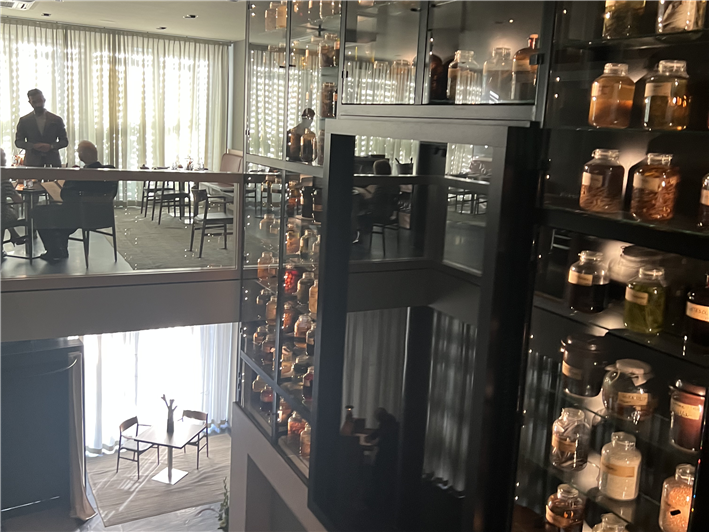
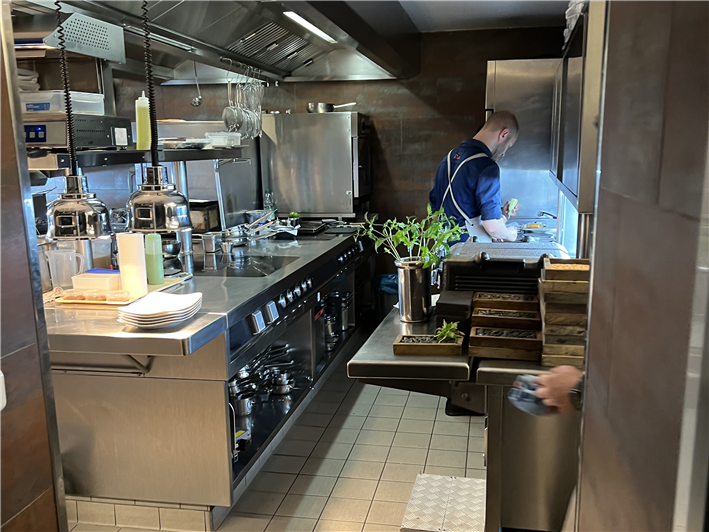


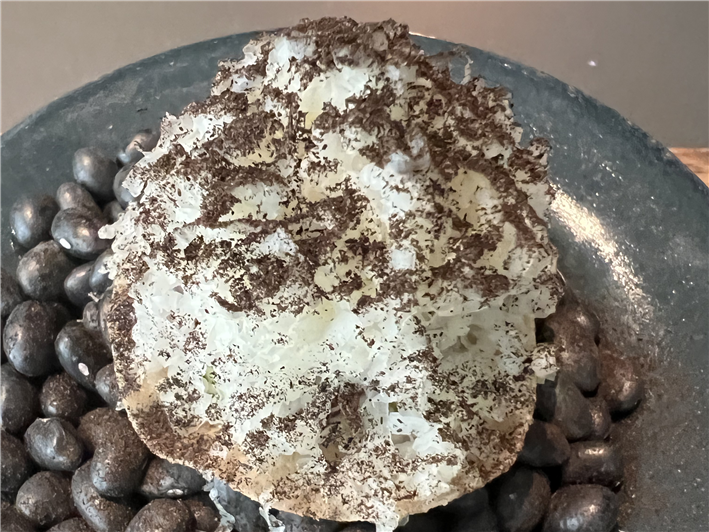
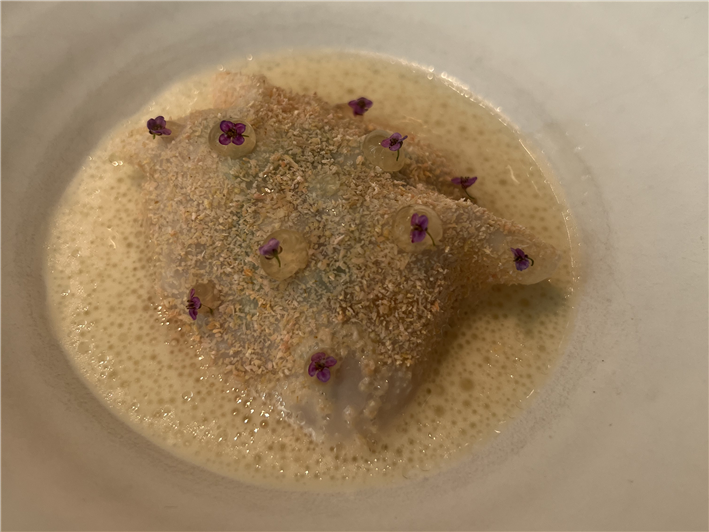


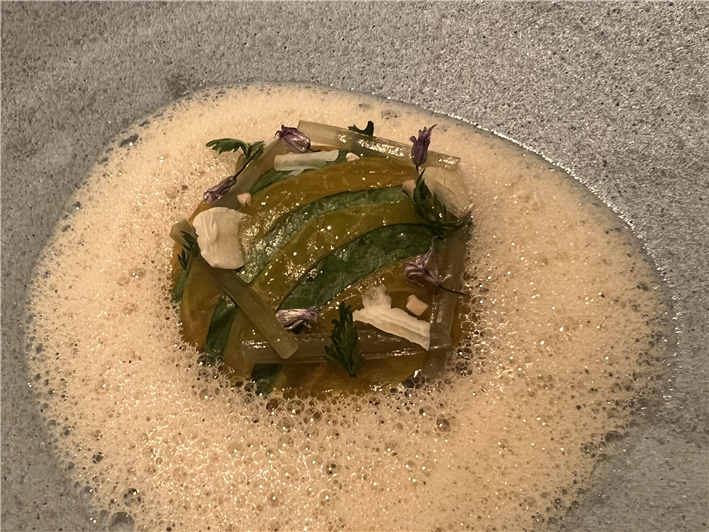
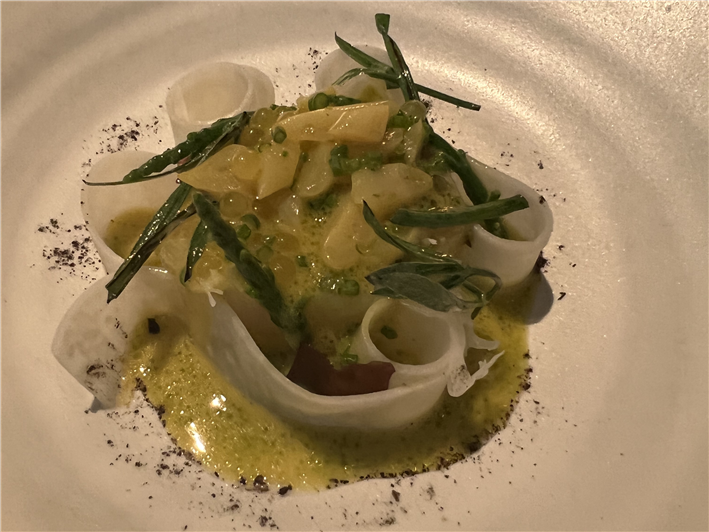



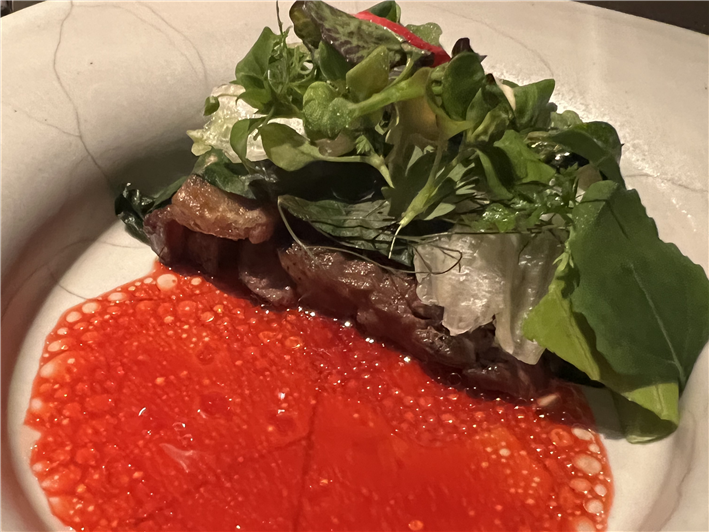
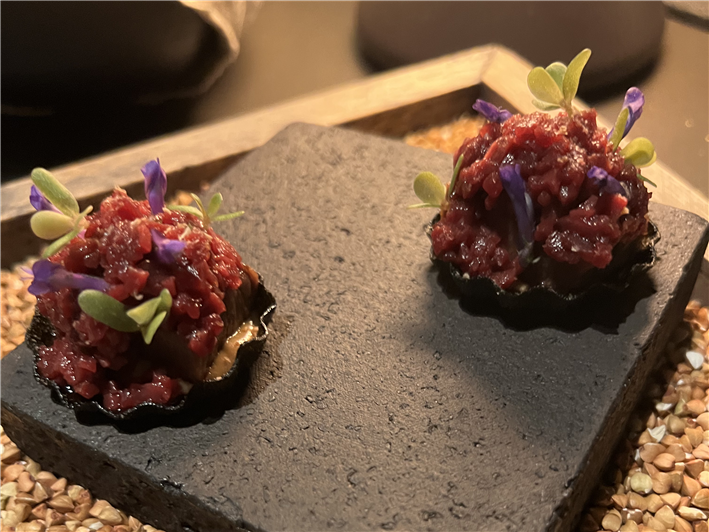




John
I do enjoy reading your reviews - informative and concise- keep up the good work